calsfoundation@cals.org
KAAY
KAAY (AM 1090) has been one of Arkansas’s most influential radio stations since it came into being on September 3, 1962. The station incorporated a successful mixed format of music, religion, farm reports, and news that was innovative for the time. Shortly after it had come on the air, KAAY was also utilized by the U.S. government to broadcast propaganda to Cuba during the Cuban Missile Crisis. In 1966, KAAY also successfully brought a new musical format to mid-America on the program Beaker Street.
KAAY was born out of KTHS, the state’s first 50,000-watt AM broadcast station. KTHS (which stood for “Kum To Hot Springs”) officially came on the air in 1924 and was granted its new increased-power operating privileges in 1953 when it moved from Hot Springs (Garland County) to Little Rock (Pulaski County). Later, when LIN Broadcasting bought the station, Labor Day–weekend listeners were teased by a new, temporary format: that of radio announcers reading names and addresses out of the Little Rock phone book and welcoming them to “The Friendly Giant” over Henry Mancini’s “Baby Elephant Walk.”
Interestingly, the announcers’ air names were taken from LIN Broadcasting’s board of directors. The original line-up was Dub Murray (“Doc Holiday”), Jim Hankins (“Mike McCormick”), Wayne Moss (the first “Sonny Martin”), and Tom Bigby (“Buddy Karr”)—the station’s first music director, with the popular Carpool Party. A religious block aired from 6:00 p.m. until 8:00 p.m., when Tom Campbell (“Rob Robbins”) took the shift until midnight. From there, Howard Watson (“Ken Knight”) took over until 6:00 a.m. Later, Dale Seidenschwarz was given LIN’s comptroller’s name, “Clyde Clifford,” and went on to broadcast a very popular program called Beaker Street. As deejays left for other markets, their air names were dropped to the bottom of a list, and the next new announcer would pick up the air name at the top of the list. These names were patented by the station so that they could not be taken to competitors’ markets. In some cases, a former announcer would be hired again by KAAY while his original air name was being utilized, so he used his real name; this happened with Wayne Moss in later years, as a “Sonny Martin” was on the air at the time. When Tom Campbell died in an accident, Robert Spears took over as “Bob Robbins.”
KAAY was probably the first station in Arkansas to employ two full-time newsmen. The station would “scoop” the competition by having a news segment at a quarter to the hour and later at a quarter after the hour. KAAY also was successful in using original comedy in its programming. One highly successful program was Ear on Arkansas, a radio parody of Eye on Arkansas on television’s Channel 11.
Top 40 music was the main format, but, in 1966, a new segment called Beaker Street was added. This program brought a totally different mixture of music during the late evening hours, including a selection of hard rock, blues, jazz, and more—music some termed “West Coast music.” “Clyde Clifford,” being both an announcer and licensed engineer, ran the “underground program” from the transmitter site in Wrightsville (Pulaski County), about twenty miles southeast of Little Rock. This not only allowed him to have the freedom to play the music (long album cuts) not heard anywhere else in the region but also gave a cost savings to LIN Broadcasting for having one person doing two jobs, as well as having the station on the air and productive over night. This was during a time when the Federal Communications Commission (FCC) had rules stating that an engineer had to be on duty at all times when a station was in operation. Because of the noise of the huge cooling fans on the RCA BTA-50F transmitter, Clifford played weird music in the background when his microphone was open for announcements.
Beaker Street settled into the 11:00 p.m. to 2:00 a.m. time slot and was followed by Beaker Theater, consisting of mystery programs from Great Britain. When the program was discontinued in 1972, Clifford left. However, the program was resurrected and aired again with different deejays.
KAAY radiated widely. The station’s primary pattern blanketed nearly the whole state of Arkansas; its secondary pattern went well beyond the state’s borders into the Gulf of Mexico, the Bahamas, Central and South America, and Canada. Rock musicians and other listeners in Cuba listened to KAAY nightly with Soviet-made transistor radios. There is an urban legend that U.S. troops heard the station in Vietnam, but there is no physical proof of this; however, a letter from a military installation in England verified KAAY’s signal there. It is also documented that the station was heard in forty states and twenty-nine countries.
Because KAAY’s signal pattern also covered Cuba, the station lent its services to the U.S. government to broadcast “Voice of America” programming to the Cuban people during the Cuban Missile Crisis of October 1962. The U.S. government had originally overlooked KAAY for this service, conflating it with KTHS, which was thought to be off the air. There were other stations already broadcasting to Cuba, but no one had the signal pattern KAAY had. Later, President John F. Kennedy honored station executives for this undertaking. This letter of commendation is displayed on the wall next to KAAY’s original mixing board in the Museum of Discovery in Little Rock.
KAAY went through several owners, the original being LIN Broadcasting, followed by Multimedia and Sudbrink Broadcasting. In 1998, KAAY was sold to Citadel, the station’s current owner. The last day KAAY broadcast Top 40 music was April 3, 1985. Clifford was given the honor of doing a one-hour Beaker Street on the last hour of the last day. Beaker Street was revived years later with Clifford as the host and was broadcast Sunday nights on Magic 105 FM, then KKPT 94.1 FM; it ceased broadcast at midnight on February 6, 2011, but was revived again in 2020, being broadcast on the Arkansas Rocks network of classic rock stations. KAAY’s current format is Christian talk radio and contemporary Christian music.
For additional information:
AM 1090 KAAY. http://www.1090kaay.com/ (accessed February 22, 2022).
Clancy, Sean. “Underground Returns.” Arkansas Democrat-Gazette, June 21, 2020, pp. 1E, 3E.
“The Friendly Giant, KAAY, Little Rock, Arkansas.” Monitoring Times. February 2010, p. 11.
Mighty 1090 KAAY. http://mighty1090kaay.blogspot.com/ (accessed February 22, 2022).
Robinson, Richard Cyril. “KAAY’s ‘Beaker Street’ 1966–1977: Late Nights of Underground Radio Programming, from Little Rock to the Western Hemisphere, on the Airwaves of the Nighttime Voice of Arkansas.” PhD diss., Southern Illinois University at Carbondale, 2009. Online at https://opensiuc.lib.siu.edu/dissertations/294/ (accessed April 8, 2024).
Stacey, Bud, and the “Mighty1090 KAAY.blogspot.com Gang.” “The Friendly Giant: KAAY, Little Rock, Arkansas.” Monitoring Times, February 2010, pp. 11–14. Online at https://www.worldradiohistory.com/Archive-Monitoring-TImes/2000s/Monitoring-Times-2010-02.pdf (accessed April 8, 2024).
Melvin “Bud” Stacey
Satsuma, Alabama
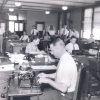 Mass Media
Mass Media Beaker Street Promo
Beaker Street Promo 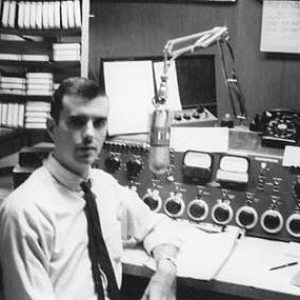 KAAY's Bob Mullins
KAAY's Bob Mullins 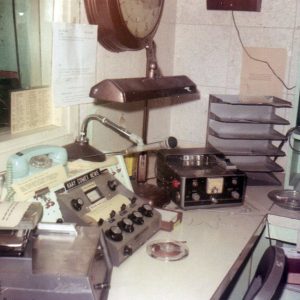 KAAY News Room
KAAY News Room 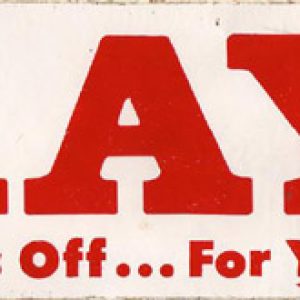 KAAY Bumper Sticker
KAAY Bumper Sticker  KAAY 7th Street Studio
KAAY 7th Street Studio  KAAY Staff and Herman's Hermits
KAAY Staff and Herman's Hermits 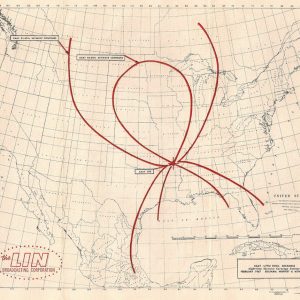 KAAY Coverage Map
KAAY Coverage Map  KAAY's George J. Jennings
KAAY's George J. Jennings 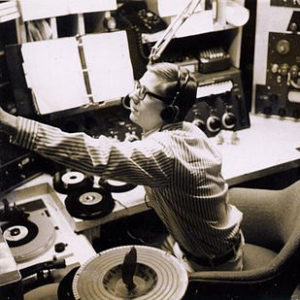 KAAY's Jim Pitcock
KAAY's Jim Pitcock 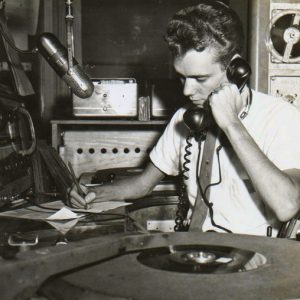 KAAY's Jerry Sims
KAAY's Jerry Sims 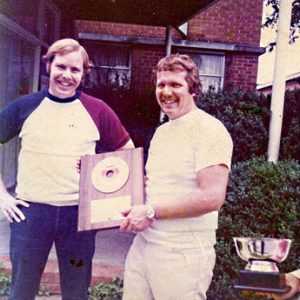 KAAY's Matt White and Dave Montgomery
KAAY's Matt White and Dave Montgomery 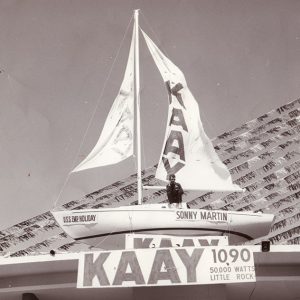 KAAY Boat
KAAY Boat 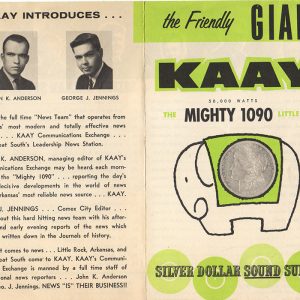 KAAY Brochure
KAAY Brochure  KAAY Music Survey
KAAY Music Survey 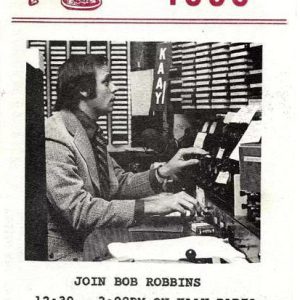 KAAY Program Guide
KAAY Program Guide  KAAY Sound Survey
KAAY Sound Survey 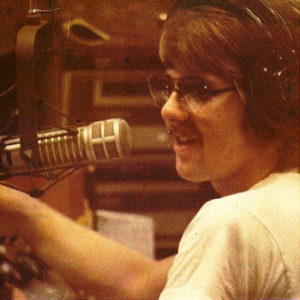 KAAY's "Marvelous Mark" Larsen
KAAY's "Marvelous Mark" Larsen  Publicity Parade
Publicity Parade 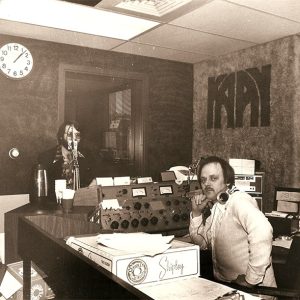 Bob Robbins at KAAY
Bob Robbins at KAAY 




Beaker Street was ahead of its time. Always in the wee hours and quality time. This was in my youth!
I grew up in northeastern Iowa in the late ’60s and early ’70s. We could get KAAY on the transistor radio in the late night hours. I remember many times getting yelled at by my dad to “turn that thing off and go to sleep!” Beaker Street was my favorite radio program. It introduced me to the progressive rock and blues music I still enjoy listening to and playing today. Thanks for the memories and shaping my musical taste.